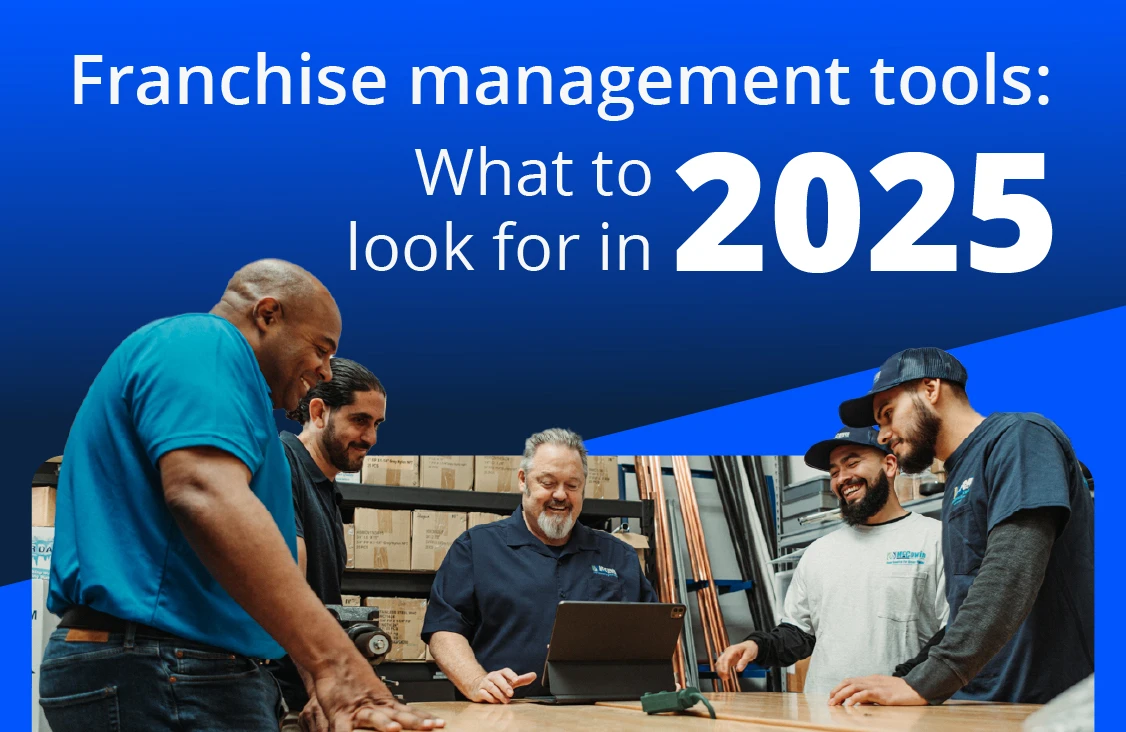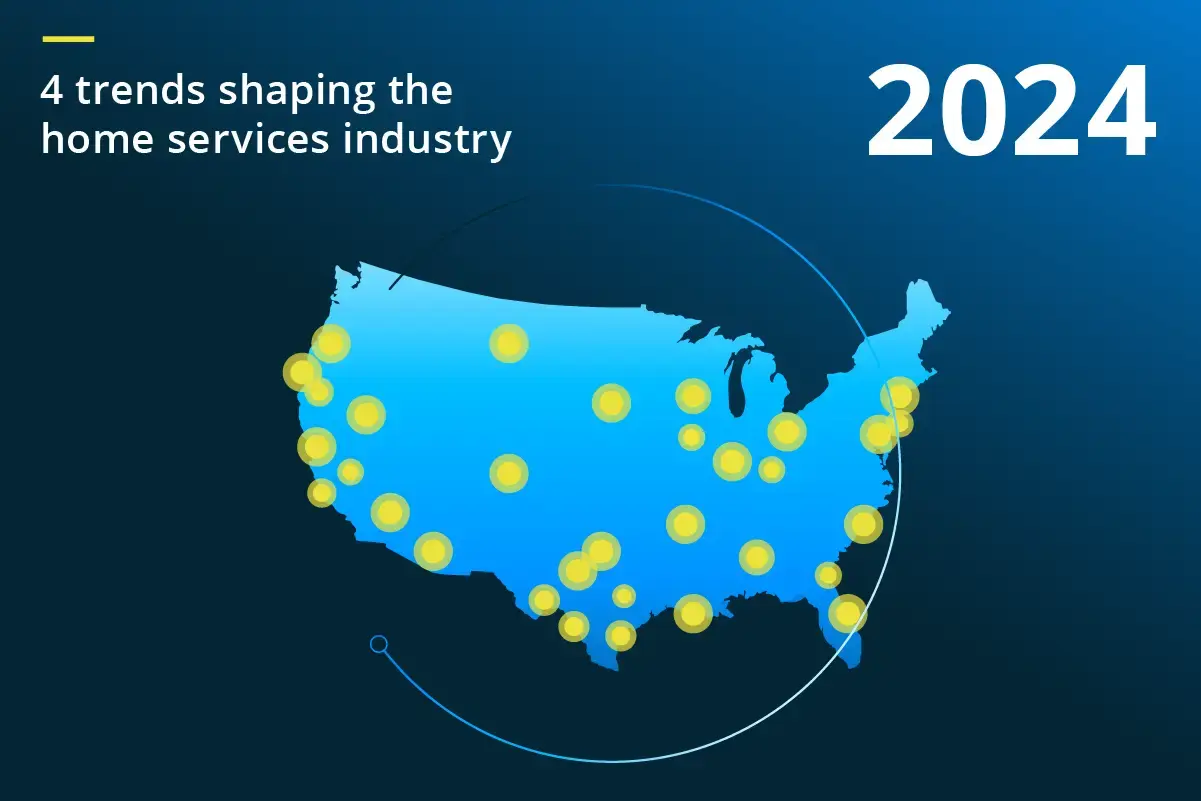
Throughout 2024, the home services industry has shown resilience in the face of ongoing challenges, including economic uncertainty, rising material costs, and inflation. This resilience reinforces the role of the trades as the backbone of the United States economy.
We evaluated data from the Bureau of Labor Statistics and surveyed over 400 professionals (Pros) across the home services landscape.1 In doing so, we discovered four major trends that are shaping the industry going into 2025.
Trend #1 – Confidence in 2025 Growth
As we settle into the final quarter of the year, optimism about growth remains strong among home service professionals. A significant 77% of Pros surveyed expect their business to grow over the next year, with 40% anticipating growth of more than 10%.
What drives this steady confidence? The indispensable nature of the home services industry.

Homes are the largest asset most people own, and trades professionals provide essential services that homeowners prioritize even in tough times. After all, a leaking pipe in the basement or a broken HVAC in the summer are not typically things you can wait on. When budgets tighten, consumers tend to cut back on other spending, like dining out, entertainment, and vacations.
The Bureau of Labor Statistics projects a 9% growth in HVAC technician positions through 2033—more than double the average growth rate for all occupations. It’s estimated that through 2033, approximately 42,500 HVAC jobs will open each year.
There are also strong growth trajectories for electricians and plumbers. Employment of electricians is expected to increase 11% through 2033—nearly three times the rate of all other occupations—with about 80,200 job openings each year. Meanwhile, employment for plumbers is expected to grow 6% through 2033, with 43,300 job openings each year. Many of these job openings stem from existing Pros who are retiring.
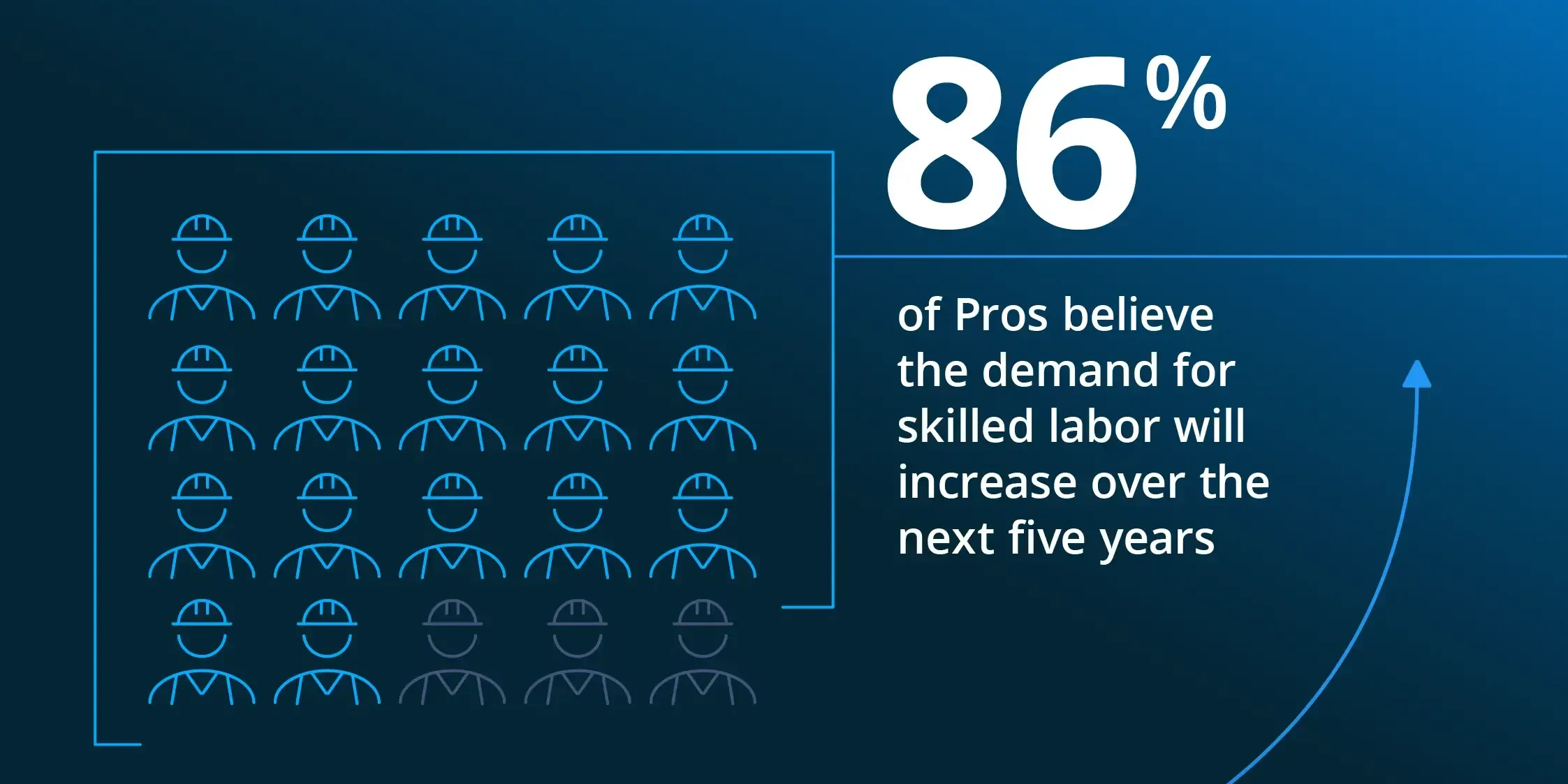
It’s clear the home services industry is pacing well for continued growth as essential services remain a top priority for homeowners, ensuring stability and opportunity for skilled trades in the years ahead. In fact, 86% of Pros surveyed believe the demand for skilled labor in the trades will increase over the next five years.
Trend #2 – Labor Shortage Continues, Yet the Trades Provide Many a Better Future Than College
The shortage of skilled labor remains one of the most significant challenges facing the trades, with 60% of trades professionals surveyed stating that labor shortages have affected their ability to complete jobs on time and meet customer demand. The rising need for skilled workers far outpaces supply, particularly in the plumbing, electrical, and HVAC sectors. This has led to project delays, longer turnaround times, and additional strain on businesses trying to keep up.
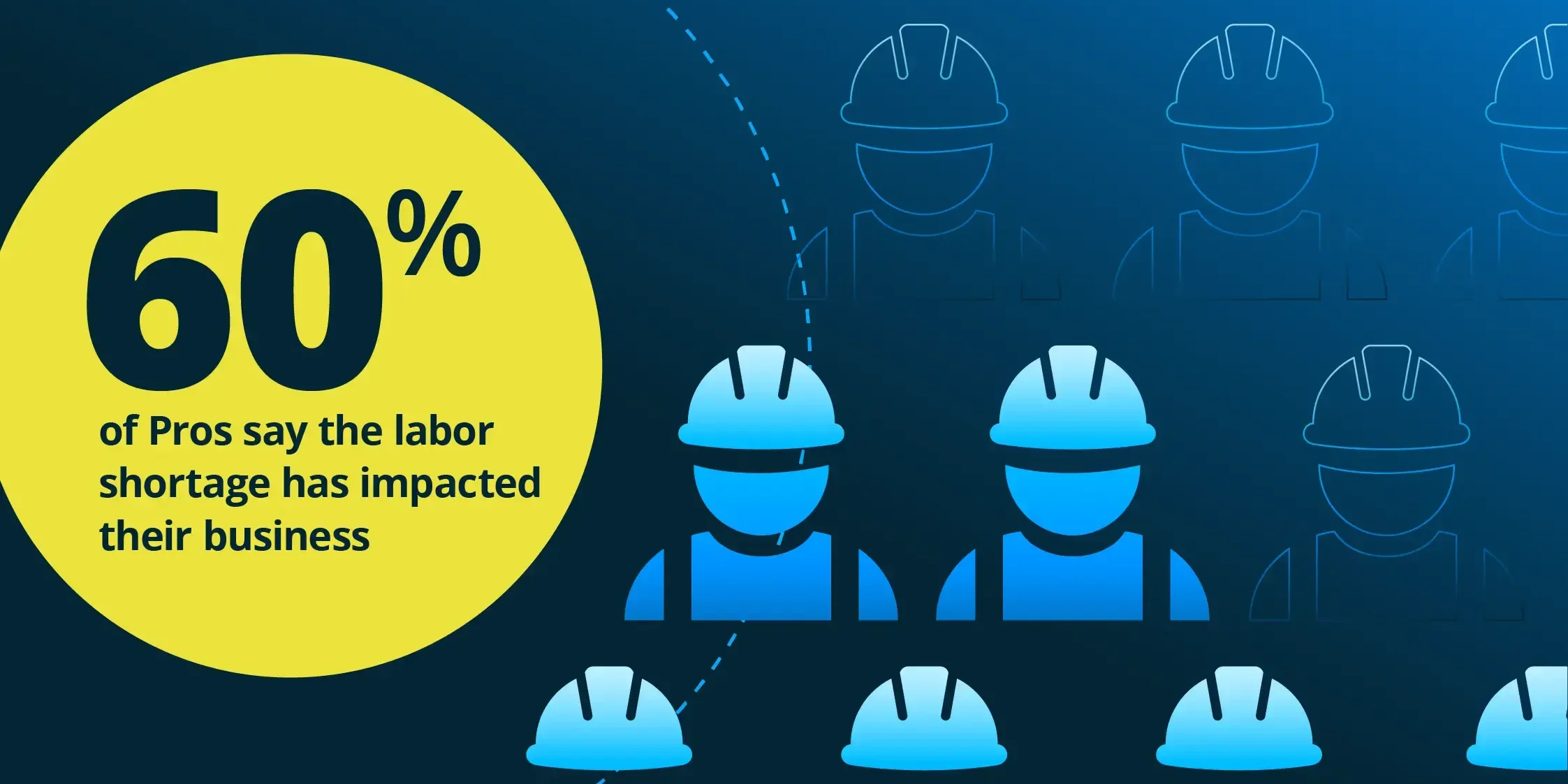
One of the main obstacles to addressing the labor shortage is the lack of qualified candidates, with 86% of Pros surveyed reporting this as their biggest hiring challenge. Yet, the trades continue to provide long-term job security, especially as older generations retire and create openings in the labor force.
Electrical, plumbing, and HVAC services boast some of the most secure employment opportunities, with average earnings pacing well compared to non-trade professions. For instance, in 2023, electricians earned an average annual wage of $67,810. HVAC professionals in states like Alaska, Massachusetts, Hawaii, and Washington saw even higher averages, with annual wages surpassing $72,000. Even more impressive, the top 10% of plumbing professionals earned more than $103,140 last year.
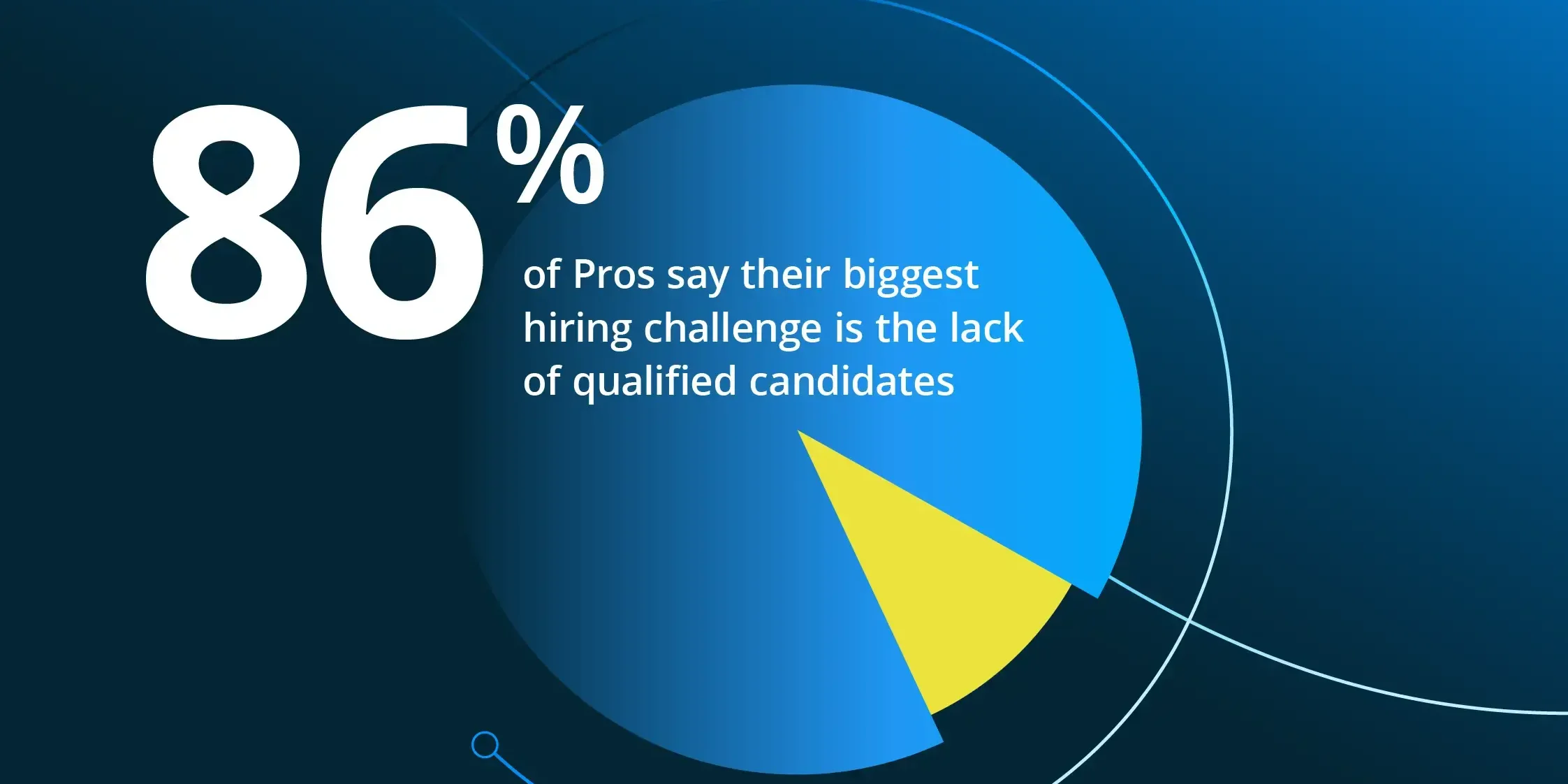
For many at the crossroads of pursuing a career in the trades or attending college, salary potential and job security have become more enticing than a four-year degree. And the high price tag of college and the debt that comes along with it could be to blame.
In the United States, the cost of attending college has more than doubled in the twenty-first century, now averaging $38,270 per student each year. What’s more, the average college student borrows over $30,000 for a bachelor’s degree—a debt that can take up to 20 years to pay off completely.
The majority of home service professionals surveyed are satisfied with their career path. More than three-quarters have a positive outlook on their career choice, with 78% of Pros surveyed reporting they are confident the trades offer a more stable career path and long-term job security than a career requiring a college degree.
Trend #3 – Trade School and Apprenticeships Offer a Path Forward
Beginning a career as a home service professional requires more than basic training—it demands hands-on education and valuable mentorship. In fact, 80% of home service professionals surveyed believe that increased mentorship, education, and apprenticeship opportunities are essential to addressing the skilled labor shortage.
For many aspiring tradespeople, trade school is the best starting point. It equips them with practical skills and experience to succeed in entry-level roles within the industry.
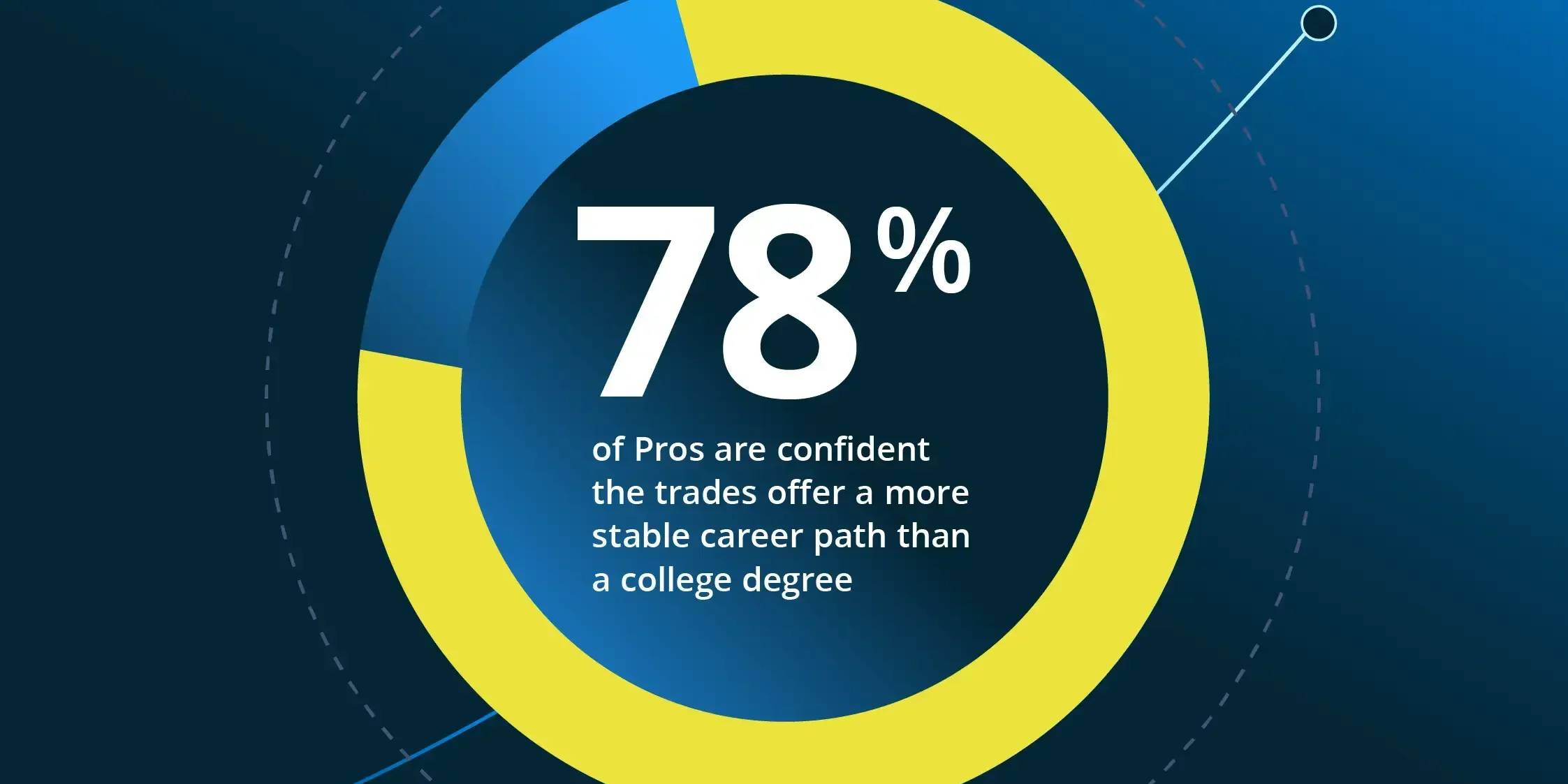
One program supporting this pathway is the Trade Academy Scholarship, backed by Housecall Pro and other sponsors. Since launching in 2021, Trade Academy has seen a 215% uptick in the number of scholarship applicants—an indicator of the increasing appeal of the trades as a solid and desirable career path.
“Trade Academy was critical to me getting to where I am today. The scholarship gave me that little bit of extra funding to put toward starting my career and trying something new. It was by far the best decision I’ve made.”
Isaac Diaz, 2022–2023 Winner of Housecall Pro’s Trade Academy HVAC Scholarship
Similarly, the demand for vocational training also continues to rise. The National Student Clearinghouse Research Center shows the number of students enrolled in vocational-focused community colleges increased 17.6% from 2023 to 2024, underscoring the appeal of alternative career paths and their role in building a skilled workforce.
Trend #4 – Continuous Learning: Pros Testing Out AI to Save Time and Optimize Their Businesses
Education doesn’t stop upon trade school graduation; for home service professionals, it’s a continuous journey to learn advanced tools that can help drive revenue growth and improve efficiency. For example, AI is starting to reshape the trades with some home service professionals incorporating it into their regular workflows. In fact, 42% of those surveyed reported they’ve used AI tools in the past year. What’s more, using AI has already made a positive impact on their bottom line, with 25% of Pros surveyed noting AI tools increased their revenue and jobs.
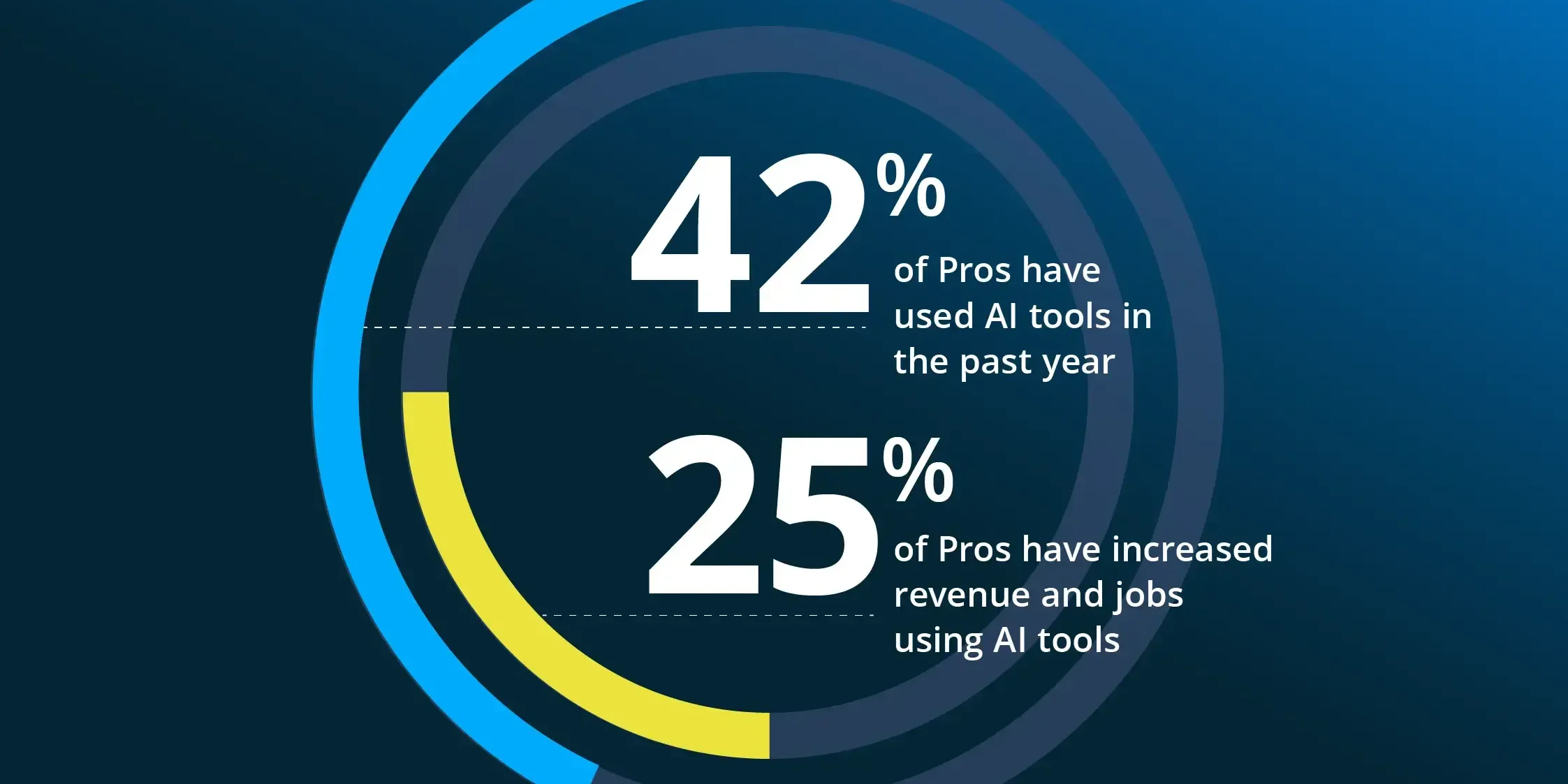
While some might expect AI to impact only a few areas of the home services industry, it’s showing up in increasingly more places—from answering company phones after hours to auto-summarizing complex checklists performed by techs into homeowner-friendly language.
Through AI and automation, home service professionals can offload manual and time-consuming tasks, such as following up on quotes and proposals, listening to voicemails and creating customer profiles, and booking jobs. This frees up time in their day to focus on serving their customers in the field, building rapport, and growing their business.
Although many Americans with an office/desk job worry about job displacement due to AI—nearly two-thirds of employees say they are anxious about this—survey findings suggest that AI is creating new opportunities within the home services market, rather than reducing employment.
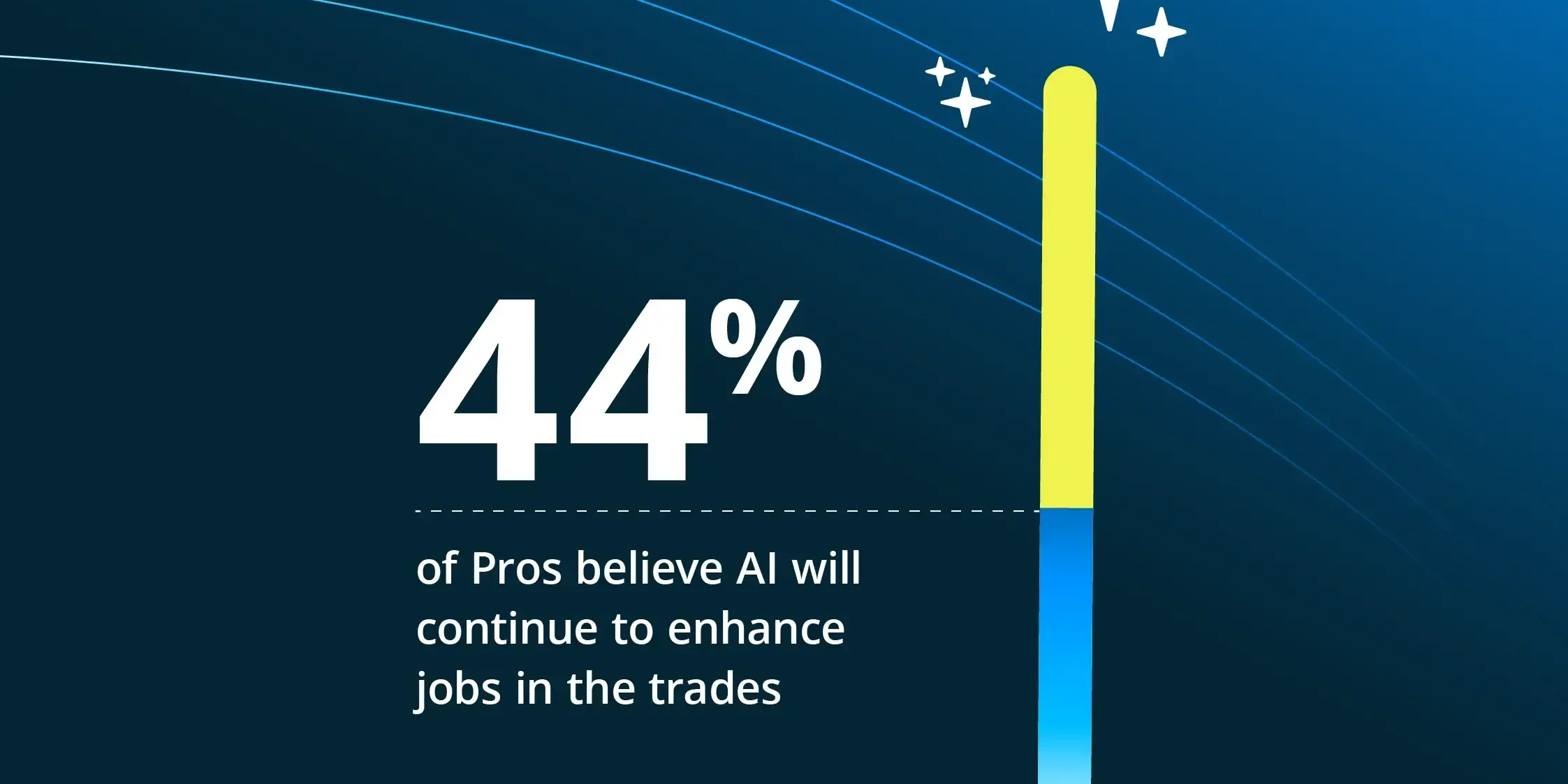
In fact, 44% of Pros surveyed feel confident that technological advances like AI will continue to enhance jobs in the trades. Unlike other industries, the skilled trades remain “AI-proof,” as hands-on work like HVAC replacements and emergency plumbing issues require human problem-solving abilities in the field.
Looking Ahead: The Home Services Industry Is Ready for Success in 2025 and Beyond
These four trends showcase how the home services industry is evolving, incorporating new technologies, and expanding its reach to the next generation. Despite challenges like labor shortages, the trades industry continues to adapt and grow, reaffirming its essential role in supporting local communities and the broader economy.
In short, the home service industry is not only surviving—it’s thriving. With cutting-edge solutions, a growing workforce, and steady demand, it’s well prepared for continued success and a lasting impact in 2025 and beyond.
For a deeper look, download a PDF of the report here.
Methodology
1. Housecall Pro surveyed 400+ home service industry professionals in North America. The survey was executed in September 2024.




